Anyone who thinks that gardening begins in the spring and ends in the fall is missing the best part of the whole year, for gardening begins in January with a dream.
Josephine Nuese
My mailbox has been overflowing with gardening catalogs – and I bet yours has been too! There’s nothing I love more than curling up with a big stack of seed catalogs on a cold, snowy day and dreaming about the season to come.
Juicy, plump tomatoes, crisp, crunchy cucumbers, fresh salad greens, sweet, snap peas, and the list goes on! I probably don’t have to tell you how wonderful it is to grow your own food from seed – but, if you haven’t ventured into seed starting, now’s the time!

Why Grow from Seed?
I can’t begin to describe the satisfaction you get from planting a tiny seed, watching it emerge from the soil; seeing it grow and blossom; nurturing its fruit until harvest and then bringing it to you table to eat – it’s one of the greatest pleasures of gardening!
For me, each seed as holds a promise and I never tire of seeing those first tiny shoots of green emerge from the soil. But, if those aren’t not enough, here are few more reasons to consider growing from seed:
- More Choices: You have many more choices for what to grow. Seed catalogs offer hundreds of vegetable seed choices – literally from artichokes to zucchini – with many different cultivars of each variety.
- Low Risk Experimentation: With so many choices you can experiment and expand your growing horizon by trying something new or different!
- More Control: It’s not often that you can control the garden, but when you grow from seed you get to choose the seed type (organic or conventional, heirloom or hybrid), the soil types, and fertilizers used in your growing environment.
- Save Money: Perhaps the greatest benefit of growing from seed is that it’s a money saver! Even with the current high demand, a seed packet is still less expensive to purchase than seedling transplants.
Seed packet and catalog plant descriptions are chock-full of great information. But some terms listed can be confusing. Let’s decipher the seed packet in order to help you make the best choice for what to grow in your garden.
Common Name and Botanical Name
A seed packet may have anywhere from one to four different names listed on the envelope. Typically, what you find is the common name, the botanical name, variety, and cultivar.
As you have probably discovered, plants can have several common names – and that in itself can be confusing. For example, in the onion family, “green onions,” “scallions,” and “bunching onions” are all the same plant.
These various common names have evolved from differences in language, cultures, and regions.
That’s where the botanical name comes in. It’s the plant’s scientific name that is accepted worldwide to accurately identify the plant. The botanical name, Allium fistulosum, tells us that green onions, scallions, and bunching onions are all the same plant!
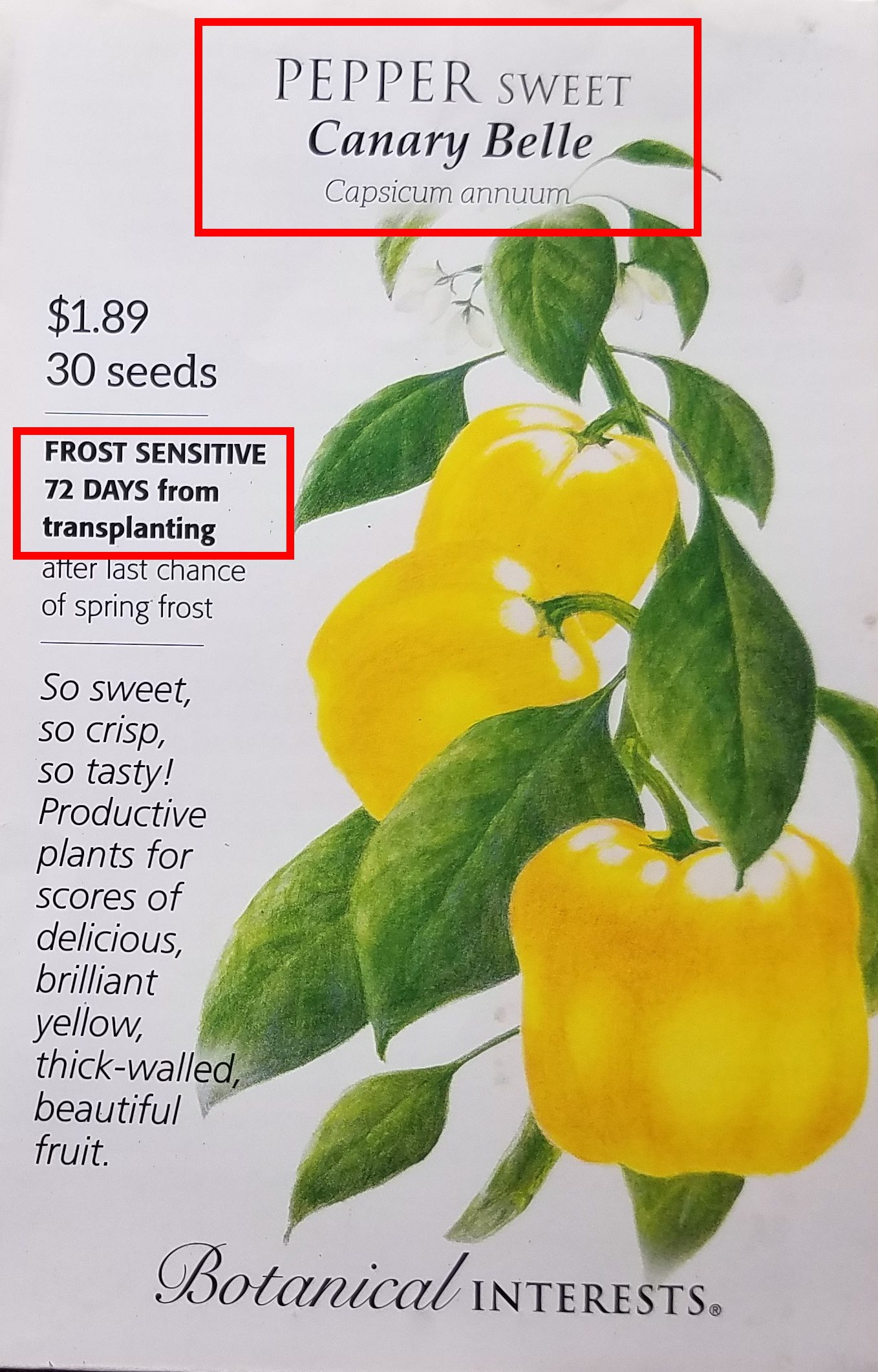
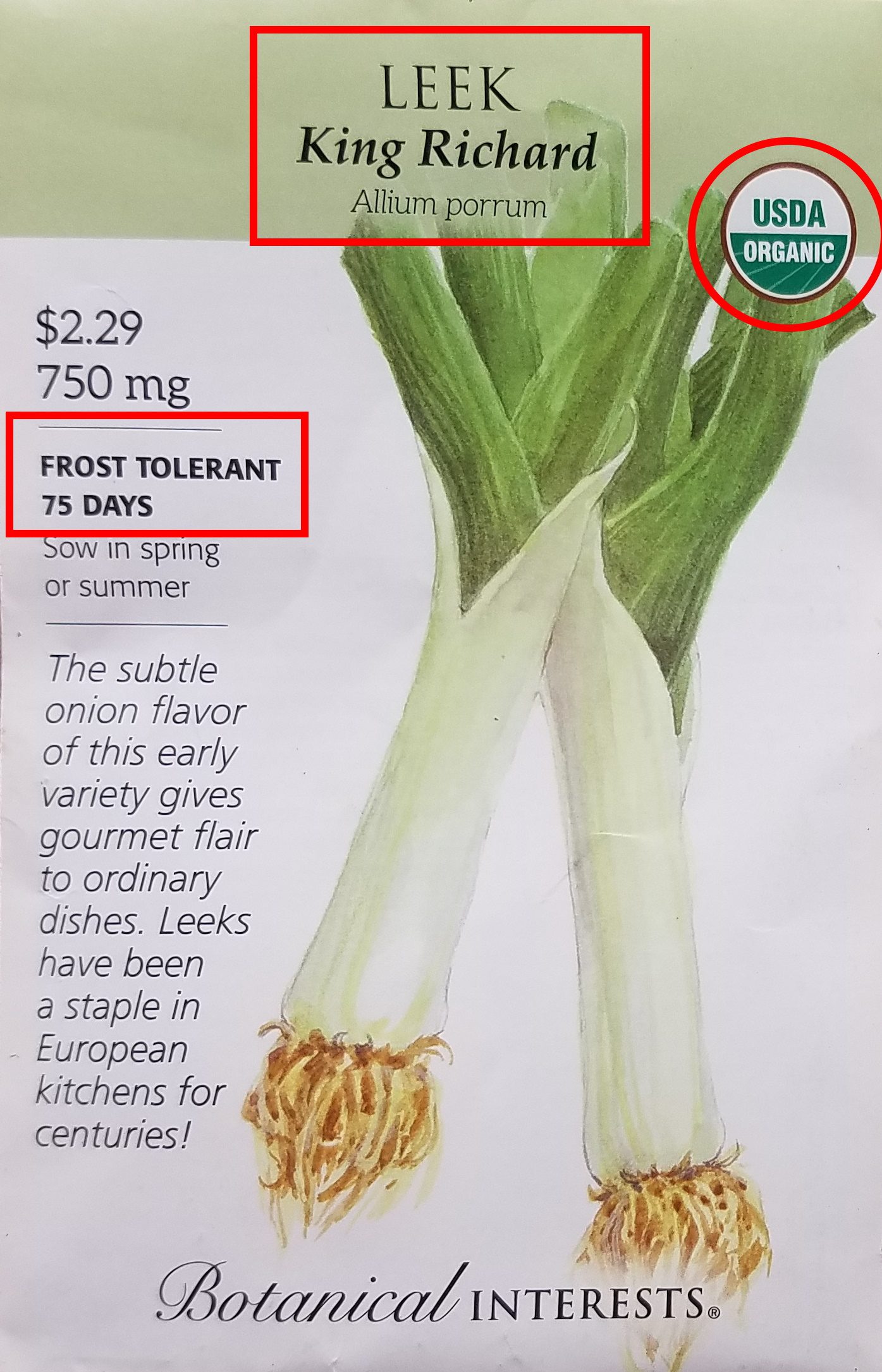
Variety and Cultivar
A plant variety is a naturally occurring selection within a species. For example, one variety of tomato is beefsteak; another is cherry. Beefsteaks are large fruits and cherry types are small. These varieties have developed naturally over time.
A cultivar is a result of human intervention through plant breeding. Each plant variety can have many cultivars. The beefsteak variety of tomato includes the cultivars of ‘Mortgage Lifter’ and ‘Brandywine’, and at least a thousand more!
Organic or Conventional Seed
A seed packet with the USDA certified organic seal means the seed is organic. Certified organic seed is produced from plants that are grown under the strict organic growing protocols mandated by the USDA. The use of fertilizers and pesticides are heavily regulated and many organic farmers choose not to us any. Because of this, organic seed tends to have a higher level of natural resiliency to pests and disease. Only the best plants will survive to produce a seed crop.
If you don’t see the USDA organic seal, the seed is conventional. It’s grown with conventional farming practices that often rely on synthetic fertilizers and pesticides to achieve a crop. If you don’t see the USDA seal, the seed is conventional.
Choosing organic or conventional seed is a matter of preference and economics. Organic seed tends to be more costly, but not all varieties of plants are available as organic seed stock.
Open-Pollinated, Heirloom and Hybrid Seed
A few other terms you’ll often see on a seed packet is open-pollinated, heirloom, or hybrid.
Open Pollinated plants produce seeds that will “breed true.” This means the seeds will produce plants and fruit that will be fairly identical to the parent plant. If you want to save seed from your garden plants, make sure you select open-pollinated types. These seeds can be saved year after year.
Heirloom seed is also open-pollinated and produces true seed. Heirlooms are simply a variety that has a history of being passed down through generations – just like an heirloom piece of jewelry or furniture. Many heirloom varieties have been around for over 100 years.
Hybrid or the symbol “F1” denotes a hybrid variety. By law, seed companies must include the word “hybrid” or “F1” on the packet. Hybrids are the result of extensive cross-breeding programs and are highly proprietary to the seed company that developed it. Since this seed doesn’t produce true seed, consumers need to purchase new seed each year to grow the plant again.
A hybrid is not a Genetically Modified Organism (GMO). Hybrids are produced naturally through plant breeding and cross-pollination. GMOs are genetically modified with genes from one species being artificially implanted in to the DNA of another species. Only commercial farms have access to GMO seed.
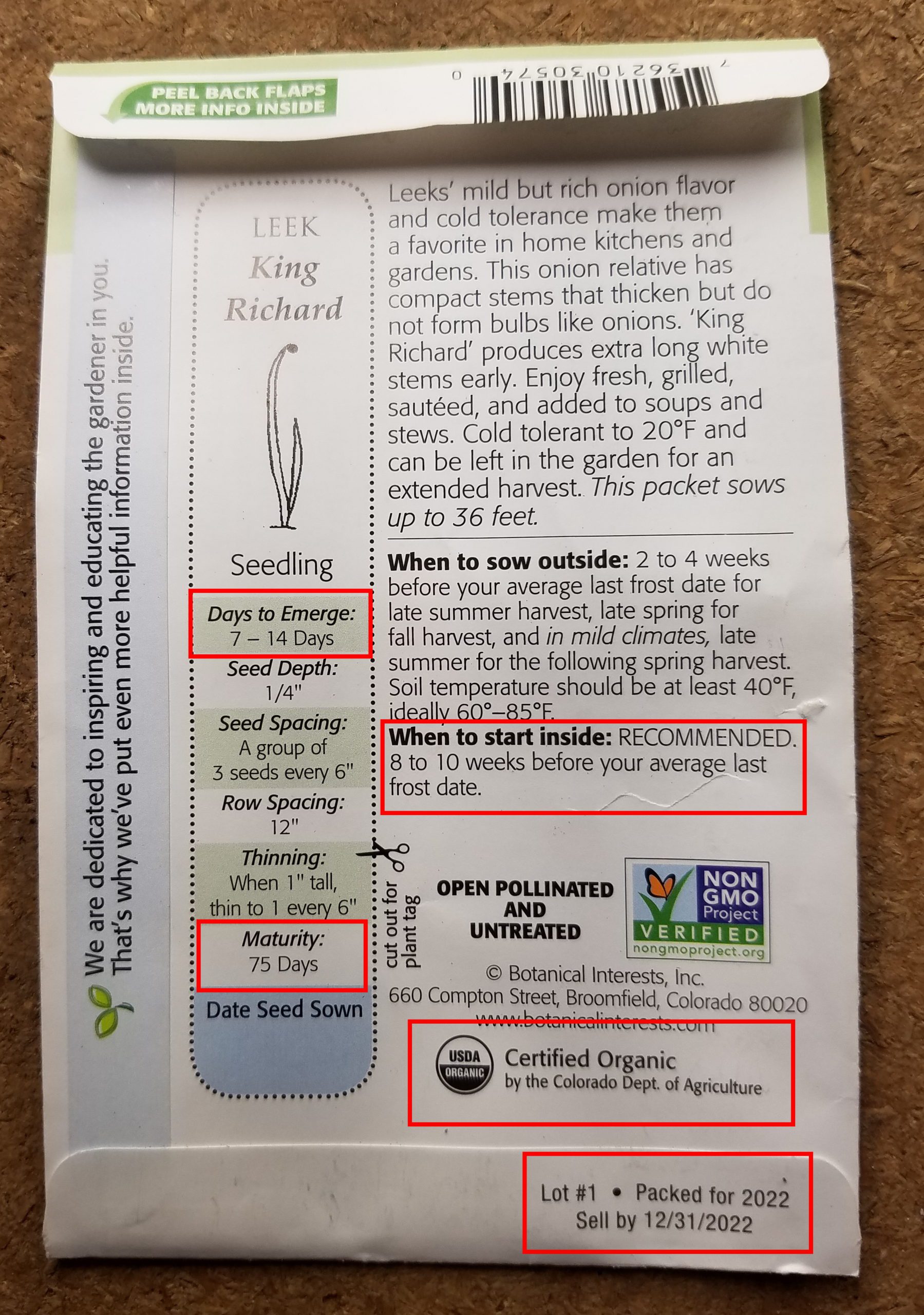
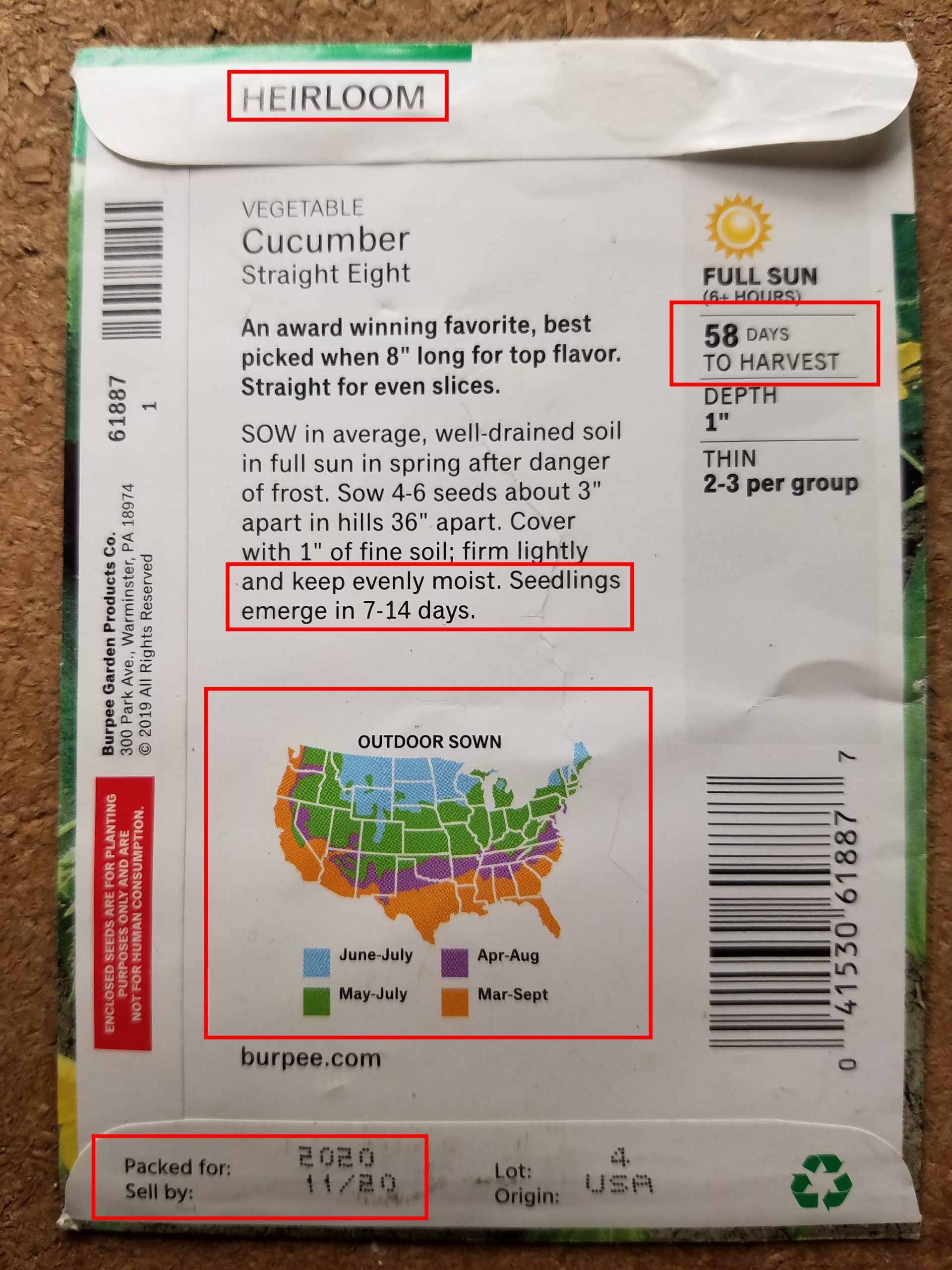
When and How to Sow
Details on when and how to sow the seed are usually printed on the back of the packet. There are two dates you need to know to successfully grow from seed. The first date is your area’s last average day of frost in the spring. This date is also critical in determining second date, which is when to sow the seed – be it indoor or outdoor.
A good example is the tomato. Tomato seeds are usually started indoors 6 to 8 weeks before the last average frost date. For my region, the last average day of frost is May 15th. By counting backward, can determine that I should start tomato seeds indoors between March 20th and April 3rd.
Some packets offer a colorful map with general sowing times listed. These are usually for seed that is direct sown into the garden.
If you are uncertain of you last frost date, contact your local County Extension office. They will have the most accurate information for your region.
Germination and Days to Maturity
You’ll also find information about when you can expect the seed emerge from the soil, as well as when you can expect to harvest.
Once again, expected days for seed germination are general guidelines that are based on “optimal” conditions. There are several factors that impact how quickly a seed germinates – or if it will germinate at all.
- The temperature of the soil. All plants have an optimal soil temperature for germination. (See Soil Temperature chart here)
- The moisture level of the soil. The soil should be between 50 and 75% of moisture capacity. That equates to not too wet or too dry. Seeds need moisture to break the seed coat, but too much water can reduce the oxygen levels in the soil and actually “drown” the seed.
- How deep the seed was planted. Seeds planted too deep will use all their stored energy trying to break the soil surface. Follow seed planting depths on the packet.
- Light requirements. Some seeds require light to germinate (lettuce and carrots) and some seed requires darkness (onions, sunflowers).
- Age or quality of the seed. Make sure to check the date on the packet or do a quick germination test before planting seed of uncertain quality.
One of the most important details on a seed packet is the “days to maturity” (DMT). This simply means the number of days it will take for the plant to produce a harvest.
DTM is an important concept to understand, since it impacts the timing of seed starting, planting, and most importantly, harvesting.
The big questions are: When do you start counting the “days?” Is it from the time you plant seeds or is it when the seeds emerge? Is it the same for seed started indoors as those that are direct sown into the ground? And, why do some plant descriptions have days of maturity listed from transplanting? All excellent questions!
To really understand DTM, let’s sort plantings into two categories, direct sown seed and seedling transplants.
Direct sown are seeds that you plant directly into the soil of your garden – such as beans or carrots. DTM begins when the seedling’s first true leaves appear. The important distinction is that you are looking for that first set of true leaves – not the cotyledon leaves that first appear.
For seedling transplants (vegetable seedlings started indoors or purchased) the DTM begins when the seedlings are planted into the ground. This is where you will see “days to maturity from transplanting” listed on the packet or in the plant description.
Knowing DTM will help you determine if a variety will produce a harvest within your growing season — and that’s very good information to know.
Freshness Matters
Another important date on the seed packet is the “packed for” and/or “sell by” dates. When growing from seed you want to use the freshest seed available for ensure good germination.
Every commercial seed packet will have a “packed for” date stamped on it. When purchasing new seed, make sure that the current year is on the packet. That means it has been produced for that year’s growing season. The “sell by” date is usually the end of the “packed for” year.
Now that doesn’t mean you need to go out and buy new seed each year. In fact, if you’ve been gardening for any length of time, you’ve probably amassed a collection of partially-used seed packets.
Seeds that are stored correctly, in moisture-proof containers and kept in a cool location with low-humidity, can remain viable from 2 to 6 years or more depending on the variety. When held in cold storage – refrigerated or frozen – the expected seed life can be extended 20 years or more.
No gardener wants to spend time and effort planting seeds that won’t germinate. Save yourself from disappointment and check seed packing dates prior to planting. If you are unsure of the date or seed quality a simple germination test will let you know if the seed is still viable.
Growing from seed is so rewarding and by understanding and following the information on the seed packet (or in a catalog), you will be primed for success to grow your favorite vegetables and flowers from seed!
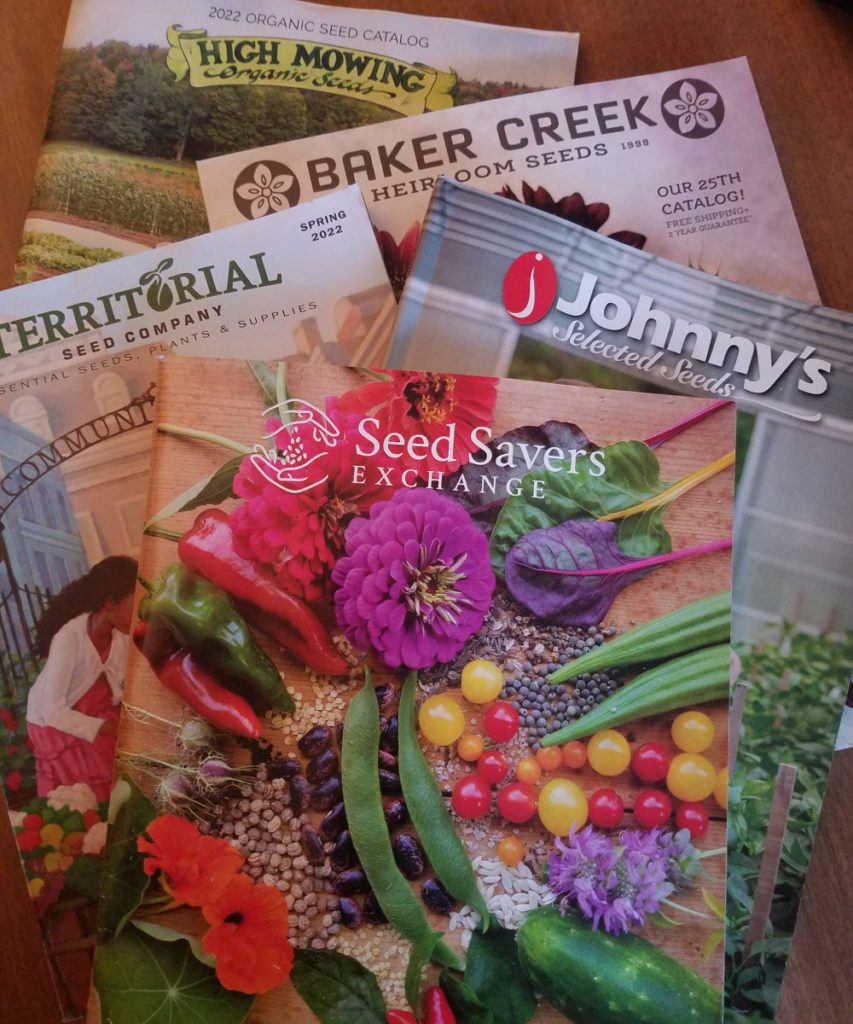


Leave a Reply